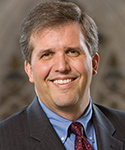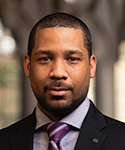We are living in perilous times organizationally. We are growing more skeptical -- even cynical -- about institutions. People are looking for alternatives to address problems of top-down hierarchies, concentrated power and authoritarian versions of leadership. Sometimes this gets expressed in romanticized desires for intimate communities that have no hierarchies, for technological networks that distribute power equally without rigid structures. The danger is that we will continually suffer from wide pendulum swings between overreliance on stultifying hierarchies or idealized notions of networks.
How might we think of hierarchies and networks together? What might this mean for institutions, and for leadership? Important clues are found in three recent books that highlight the importance of networks and “new” power while also acknowledging the importance of hierarchies and “old” power. Such clues challenge our temptation to think of networks and hierarchies in either-or terms.
It is now commonplace to describe the contemporary world as a “networked age.” The phrase is used both as a literal description of our hyperconnectivity and as a powerful metaphor for new patterns of relationships and distributions of power in a world of accelerating technological advances. These advances, and an increasingly interconnected world globally, are linked to growing distrust of established institutions and organizational assumptions about hierarchies. As a result, there is a growing chorus proclaiming that our “networked age” will result in the disappearance of hierarchies and a “new” era of democracy and health without the burdens of “old” power and bureaucracy. The social world, we have been assured for two decades, is flat.
Is that true? Do we need to just lean into networks, assuming that hierarchies are part of an old regime destined for the dustbin of history?
Niall Ferguson’s new book, “The Square and the Tower: Networks and Power, from the Freemasons to Facebook,” affirms the power of networks, acknowledges that we live in a networked age and challenges assumptions about the elimination of hierarchies. Ferguson argues that we will continue to need, and depend upon, hierarchies, even in a world in which networks play an increasingly significant role. Having researched and written an extensive biography of Henry Kissinger, Ferguson shows how Kissinger was able to have enormous impact because he mastered the art of developing informal networks even while he operated in a central role in the hierarchy of U.S. government.
Ferguson’s analysis is in many ways a defense of the importance of networks to innovation and their relevance to transformational political, economic and cultural changes throughout history. He notes that we tend to “overlook how widespread they are in the natural world, what a key role they have played in our evolution as a species, and how integral a part of the human past they have been.” They are important, further, not just as “transmission mechanisms for new ideas, but as the sources of the new ideas themselves.”
Ferguson cautions, though, that even as we need to recognize the power of networks, we ignore hierarchies at our peril. He suggests that tensions between networks and hierarchies are as old as humanity itself. Networks may now have the upper hand, because technological advances have led to their unprecedented size, speed and density. But he believes that networks require hierarchies if there is to be order and coherence, and he worries about the rhetoric of a “networked world” that fails to attend to the positive value of hierarchies.
Jeremy Heimans and Henry Timms complement that analysis in “New Power: How Power Works in Our Hyperconnected World -- and How to Make It Work for You.” They highlight the contemporary and future importance of networks and “new” power while also acknowledging the continued importance of hierarchies and “old” power.
Heimans and Timms note, like Ferguson, that there has “always been a dialectic between bottom-up and top-down, between hierarchies and networks.” While their book title suggests that they are drawn to the possibilities of a new model of distributed power rooted in networks, they emphasize “the art of blending power.” They lift up organizations that have created models “that bring together old and new power in ways that reinforce each other,” noting that such organizations “have found that the combination of old and new power can be greater than the sum of the parts.”
The organizations they describe cut across ideological lines, including the National Rifle Association and the TED (technology, entertainment and design) movement. While the organizations themselves may have little in common intellectually (and few shared participants), the thing they do have in common is a blend of centralized authority and decentralized networks -- and their models point to their ongoing impact.
The art of blending power is an organizational as well as a leadership task. Heimans and Timms write: “Many of us understand how to speak old power -- after all, that is the world we grew up in. Rising generations may have new power as their mother tongue. But those who really change the world will become fluent in both.”
Heimans and Timms suggest a key image for leadership that blends power well: a “shapeshifter.” A shapeshifter is different from either authoritarian (hierarchical) or disruptive (network) leadership; the shapeshifter recognizes that leadership matters in moving organizations forward through networks while also drawing on the best of organizational structures. In contrast to the self-avowed “disruptive” leader they describe who urged people to just “break s**t” in order to address challenges, Heimans and Timms suggest that shapeshifters lead with more nuance and care: “Leading an old power organization through transition isn’t about ‘breaking [s**t].’ It requires a tricky blend of tradition and innovation, past and future. Those efforts need shapeshifters who can show -- by example -- how to get the best of both worlds.” Shapeshifters are leaders who practice traditioned innovation.
These shapeshifters also understand how to operate from both the center and the edge. Martin Dempsey and Ori Brafman’s new book, “Radical Inclusion: What the Post-9/11 World Should Have Taught Us About Leadership,” brings together as co-authors a quite unlikely pair: the former chairman of the U.S. Joint Chiefs of Staff -- a four-star Army general -- and a secular Jewish leftist leadership guru from Berkeley.
Yet together, they show how effective leadership requires both hierarchies and networks, both centralized “old” power and decentralized “new” power that offers the capacity to grow and learn. General Dempsey, they note, in the course of his military career, “realized that often -- perhaps even usually -- the most important piece of information that a senior leader needs is one that comes from the edge of the organization, not from its center.”
This doesn’t mean that generals should reject the authority they have in a hierarchy; rather, they need to think and lead in ways that also embrace networks at the edges. Similarly, General Stanley McChrystal’s emphasis on a “team of teams” provides innovative ways to ensure both centralized authority and alignment and decentralized networks of powerful agents operating on the edges.
What does this mean for Christian institutional leaders? First, leaders need to learn the practice of integrative thinking, holding together things that others put into opposition. This includes tradition and innovation, centers and edges, and -- especially in an era when social media and movements and “flat” organizations are the rage, and institutions are deeply distrusted -- networks, hierarchies and power.
Second, leaders need to focus more attention on “shapeshifting” leadership rather than either survival or disruption. This requires asking different questions, engaging different sorts of stakeholders, and prioritizing time with people in informal networks as well as more “official” reporting structures. It also requires developing network strategies as an integral component of the organization’s vision.
Third, leaders need to find ways to encourage and support their employees in developing and sustaining networks both within and across their organizations. This should be an expected part of people’s work, not just an encouraged “add-on” to their responsibilities. Networks are especially important for younger people in an organization, but not only them. Senior leaders need to attend more to, and participate in, informal networks across sectors, age groups and disparate roles -- more than has been the norm.
Thinking of networks and hierarchies together can’t be just “one more thing” to add to Christian institutional leaders’ already overtaxed schedules. Rather, this integrative approach is a way of re-envisioning the very vocation to which leaders are called, suggesting patterns that can offer more life-giving and sustainable understandings and embodiments of power, authority, trust and community.













